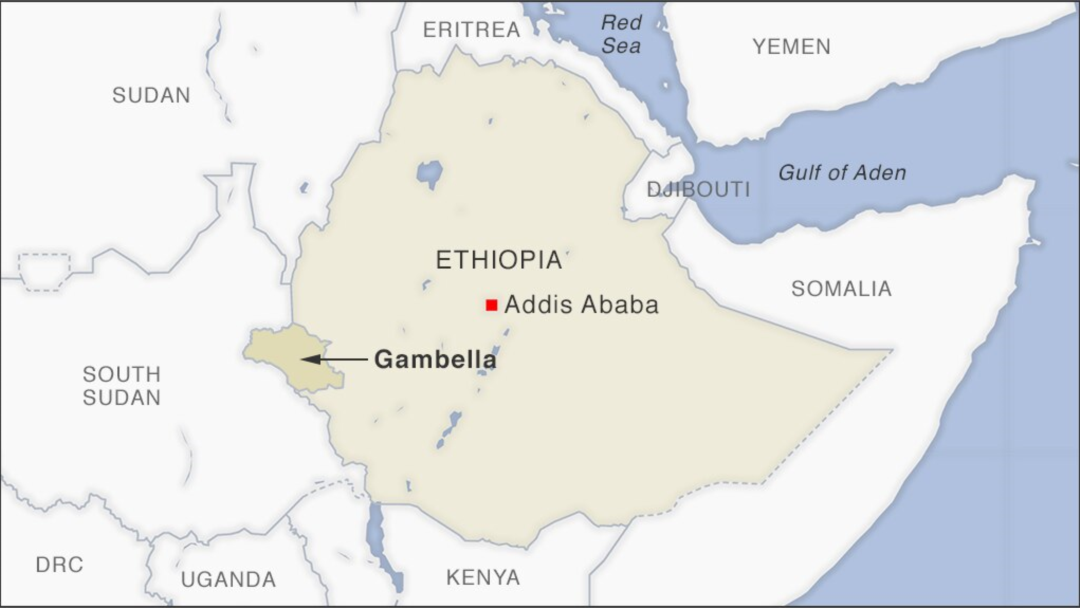
Shoot-out in Gambella ends with five dead
There was fighting in Gambella last week, Thursday – a shoot-out that lasted from 11am to 5pm – in an area known as Itang Special Wereda. Located about an hour away from the capital of the region, Gambella city, Itang is where Anywaa and Nuer communities live.
Five people were killed and seven others have been injured in this fight between armed assailants that was sparked off when a local militia was shot dead from afar. Those who left their houses during the fight had their houses burned down once they left by the attackers. The full story in Amharic on Ethiopia Insider here.
To understand the long-standing tensions between the Anywaa and Nuer communities, I would suggest going back to read this 2021 piece by Ethiopia Insight entitled, ‘Uncaring Addis fuels Gambella’s cutthroat communal contest’.
Protests over mosque destruction
Remember the update on forced evictions and demolition of houses in areas surrounding Addis Abeba from early April? You can go here to read more on that.
Last week, protestors took to the streets to oppose the destruction of mosques in Sheger City, which comprises most of the outskirt areas in Addis under its administration. The protests took place around mosques in the city.
This has led to two deaths so far while dozens have been arrested for ‘coordinating the protests’, according to a story by The Reporter. Meanwhile, the Oromia Region Islamic Affairs Council is saying that 19 mosques have been demolished and is asking for them to be rebuilt.
The full story here.
Armed assailants attack sugar factory in Oromia
Eleven employees of Finchaa Sugar Factory and three other local residents have been killed in an attack on the factory by (another group of) armed assailants.
The factory has been the site of similar attacks over the past two years but while the previous ones had focused on burning the property of the factory, the assailants, which couldn’t be identified as of yet, went into the factory this time.
The factory is located in Horro Guduru, in Wellega Zone, Oromia, where intense fighting has been reported between the Ethiopian government and the Oromo Liberation Army (OLA) after negotiations between the two failed to end in a truce.
The full story in Amharic on Ethiopia Insider here.
In other news
Over 170,000 refugee students have been enrolled in school, according to the report the Ministry of Education presented to the parliament last Tuesday. This is part of the country’s efforts toward, ‘the inclusion of refugees in societal services along with host communities’. The full story on The Reporter here.
The OLA and the Ethiopian government failed to come to an agreement in the negotiations that took place in Tanzania in late April/early May. Since then, renewed fighting has broken out in many areas in Oromia Region. While the OLA says that the government is on an all-out offensive despite an understanding to de-escalate, the Ethiopian government has not only kept quiet but in this story by Ethiopia Insight, a state minister has said, he’s ‘not aware of the recent fighting’. Despite both sides saying that they are looking for a peaceful resolution, is it likely for another round of peace talks to take place soon? This piece weighs the considerations.
The Ethiopian Orthodox Tewahedo Church is pledging 20 million Birr to support humanitarian efforts in Tigray Region. The Church also said that it will continue to work toward unification. If you recall, the Tigray Orthodox Tewahedo Church cut ties with the Holy Synod in May 2021 due to what it said was the silence of the Ethiopian Orthodox Tewahedo Church during the war. If you don’t recall, you can go here and read the update from February. The full story in English on Addis Standard here.
That’s all for this week. I’ll be back next week with more updates!
In the meantime, you can help support my work by forwarding this email to friends and family who might benefit from keeping up with what’s going on.
Note: I go through all the major news outlets, newspapers, online publications, and will at times, include reports, notes on parliamentary sessions, and go through fact-checking websites as well. I try to provide links to both English and Amharic sources, and I usually time-stamp the video I link to unless I think the whole video is relevant.



